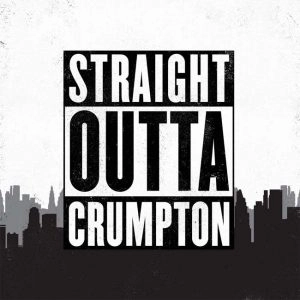Cotton Productions’ Harmful Environmental Impact is Partly Being Fueled by High Consumer Demands
The world is rapidly changing, forcing the discussion around the environmental impact of our choices central to many industries. Of them is the textile industry. As the most commonly produced and bought fabric, cotton is the staple of most wardrobes. But it also carries a heavier ecological burden ranging from the growth of cotton itself, to how it is processed.
However, advancements are being created to improve its processing. Further, more alternatives are being made for a more sustainable production, so the blame isn’t just on the producers. In fact, consumers have a role that’s just as big in the life cycle of their clothing, even right down to how they choose to launder them. Educating people about the unique properties of fabrics, such as cotton’s higher demand for water compared to other fabrics, can lead to significant reductions on its environmental impact.
Adopting more environmentally conscious habits doesn’t just preserve our planet, it also ensures the longevity of the garments we cherish. When it comes to fashion and the environment, Huantian Cao is right in his lane. As a Professor and Chair of the Department of Fashion and Apparel Studies at the University of Delaware, Cao is extremely knowledgeable in fashions’ joys and woes. Of those woes, he discusses the environmental impact cotton has on the water supply, and also how consumer buying habits further fuel it.
Cao’s Thoughts on Cotton’s Environmental Impact
Consumer Role and Textile Impact
“I agree with the Natural Review article that consumers can play a very important role to reduce their environmental impact during the life cycle of the textile products, including cotton, because the washing, drying would have lots of water, chemical means detergent, as well as energy use.”
“And especially in developing countries like the United States, we heavily use the machine drying or tumble dry, which has lots of energy use.”
Cotton Cultivation and Water Usage
“For example, cotton, it’s an agricultural product and during the cultivation of cotton, there are lots of chemicals and water used.”
“Cotton has a much higher production or productivity when it’s irrigated compared with what it’s called dry land or completely rely on the rainwater for the water.”
“So usually the irrigated cotton could have about three times of the production on the same land compared with non-irrigated or rely on the rain.”
Chemical Use in Cotton
“And for the cotton cultivation, there would be pesticides or insecticides, hermicides, fertilizers, and the defoliant and those chemicals used on the cotton field.”
“So cotton is a pretty heavy chemical use.”
Genetically Modified Cotton
“And in the naturalist review study, they did mention that some of the genetically modified cotton like BT cotton has the potential to reduce the insecticides use, but also the reduction kind of reduced recently because it can only control certain type of pests or insects and there’s still some of other insects cannot be controlled and they need to be controlled by chemicals.”
Cotton vs. Polyester
“And in the textile side, the cotton’s environmental impact would be somehow similar to many other fibers like polyester since technically the production would be very similar from the fibers being into the yarn and weave or knit into the fabric and doing the dyeing finishing.”
“And for cotton, it has a higher water absorbing property compared with polyester.”
“But if we use a cotton setting to dry polyester, we waste the energy and also cause more of the carbon emissions.”
“And similarly, cotton has a higher water absorbing and a lower affinity to the oil or grease.”
Consumer Education
“So for example, for cotton, it has a higher water absorbing property compared with polyester.”
“But if we use the same amount of detergent, same washing temperature, same washing time or cycles between cotton and the polyester, certainly we waste our water, our energy and the chemical for the washing stage for the cotton.”
Textile Production Stage
“That is mainly essentially in the textile production stage.”
“So for the textile production, the dyeing of the cotton, for example, as well as many of the other textiles has the chemicals like dyes and they needed to use a lot of water and lots of energy needed to increase the temperature to near boiling temperature in many cases, and at least a very hot water in those process that would be pretty energy intensive and cause those common, you know, increase the common footprint.”
Technological Advancements in Textile Industry
“So there are some of the technology developed in the industry.”
“So for example, to have a reduced temperature dyeing and finishing process, and even at the room temperature.”
“And another new technology is to have a reduced water use. Use some other medium, other than water or H2O in the coloration process.”
Article written by Alexandra Simon.








